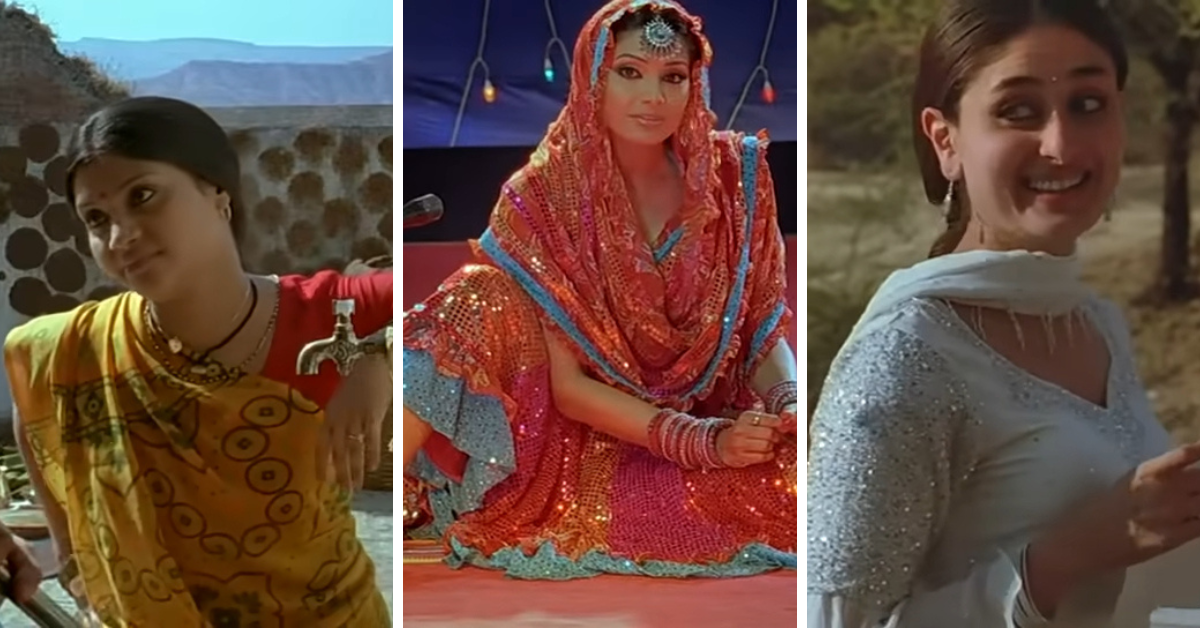Even though Omkara is a tragic love story woven together with themes of betrayal and family, the one thing that stands out about it is the ensemble of the various characters.
Be it Billo’s sexy dance outfits or the dark, cape-like shawls that Omi wraps himself in, it is evident a lot of thought has been paid to the fashion of Omkara’s characters. Langa Tyagi sports a rustic kurta for most of the film, Kesu adorns his cheque shirts for a more youthful, “modern” look, and Bhaisaab is always in contradictorily in white.
But today, I want to look at the clothing of Omkara’s women, in particular, because I think it tells a fascinating, albeit quiet, story about the circumstances of its women.
Warning: This post contains some spoilers.
The Three Leading Women of Omkara
1. Dolly (Kareena Kapoor)
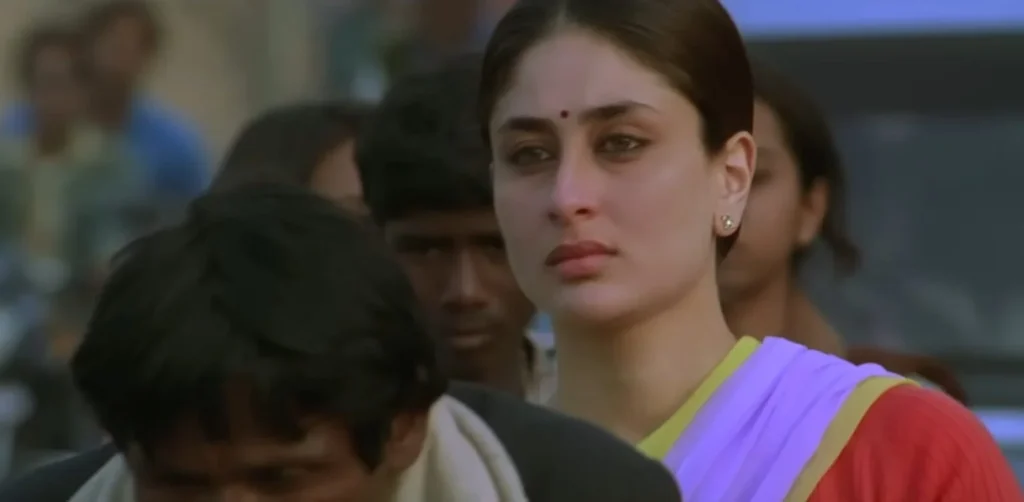
Towards the beginning of the film, Dolly is always seen in simple and colourful kurtas, free of much makeup or heavy jewellery. Just a simple bindi and earrings is how she mostly completes her looks.
However, when Dolly moves to Omi’s house, the fabrics used in her outfits become much richer, such as the red brocade saree she wears when Omi gives her the kamar bandh, which highlights the significance of her impending marriage. After all, red is supposed to symbolise love, prosperity, and domestic bliss, making her outfit quite relevant for the stage of life she is in.
Slowly but surely, even her eye makeup gets more intensified. Liner and kajal become a part of the equation for her, and as the film goes on, the jewellery becomes more pronounced as well. All of this points to the fact that Dolly has transformed from a girl to a woman and has begun carrying herself as such. The addition of rings and bangles to her look also enforces this idea.
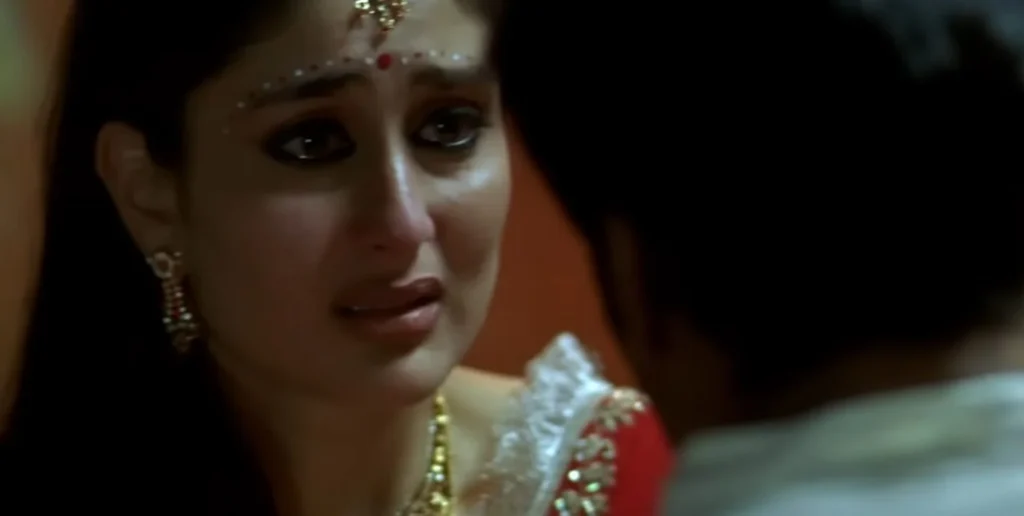
On that note, it’s fascinating to see that when things do finally start going downhill for Omi and Dolly, her entire look also starts reverting to a simpler tone, as if to foreshadow the fate of the doomed, star-crossed lovers. The fabrics become much lighter, the colours are more muted, and she barely wears any makeup or jewellery.
Hence, the climax, in which Dolly is finally decked up as a bride, is a pivotal moment where she is finally decked up from head to toe. She wears a beautiful red saree with sequins, gold jewellery, heavy kajal, and all the other adornments that complete a bridal look.
Out of all the leading ladies in Omkara, Dolly is the one character whose wardrobe shows her progression into adulthood, but it does so quite subtly, making her outfit in the final scene a fitting finale.
2. Indu (Konkona Sen Sharma)
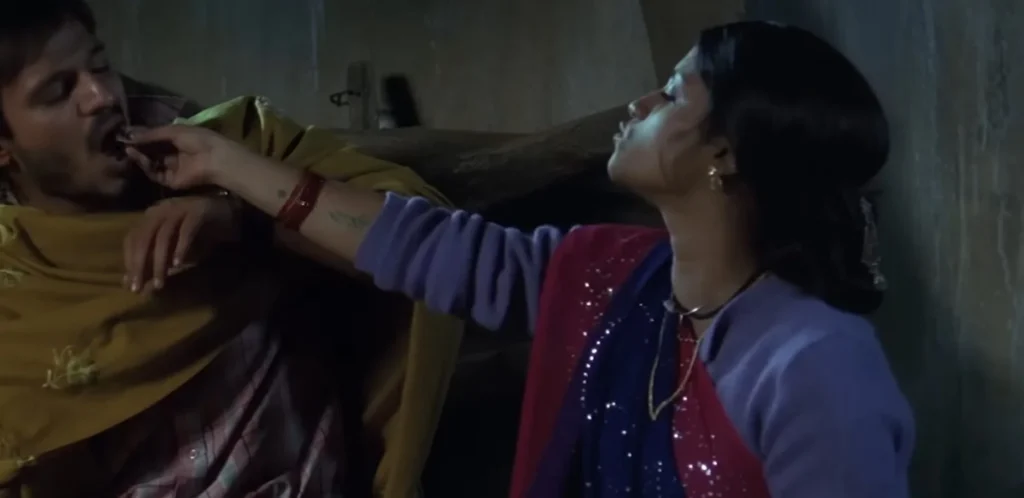
Indu’s fashion isn’t unique or new, which is what works in her favour. She wears pretty normal sarees, sweaters and jewellery, an apt representation, for the most part, of a married woman in India’s villages. Her hair is tied back in a bun, and there’s nothing “stellar” about her looks — but that is the whole point.
Indu is a woman who is evidently shackled by the norms of a patriarchal society, which is why she chooses to support her husband and inadvertently destroys her brother’s love life. As such, her outfits are also very “bland” and do not change much as the film progresses.
She lives by the rules of the society she is a part of, and the sindoor, bindi, baaliyan, and silver necklaces act as her plight’s motif.
3. Billo (Bipasha Basu)
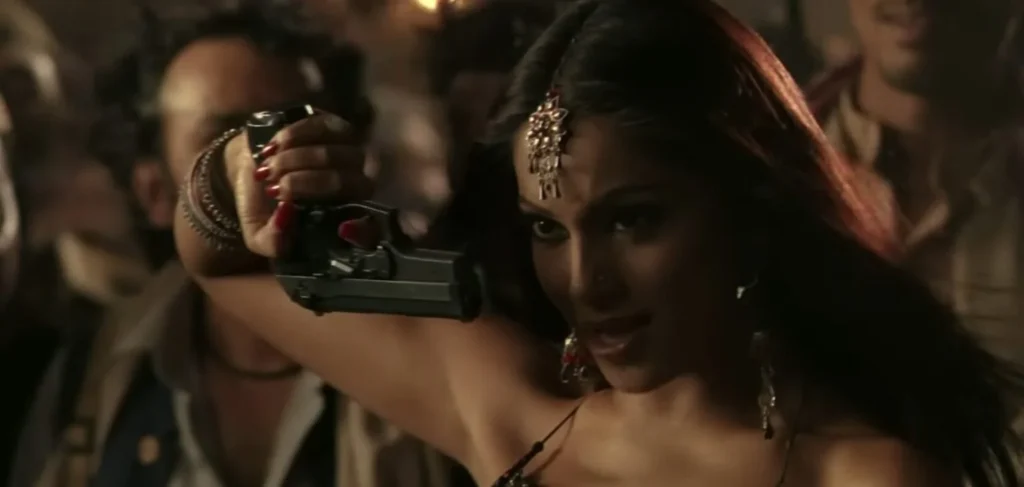
Out of the three main actresses in Omkara, Bipasha Basu has the most sex appeal, and her outfits reflect the same. Billo is a dancer, and she knows the power of her beauty, which shows through in all her looks.
While most people probably remember her ghaghra choli dance outfits, which only someone like Basu could have pulled off, it is worth noting that even the most “mundane” outfits sported by Billo have a certain je ne sais quoi that mildly challenges the status quo followed by most women in their village.
What is unique about Billo is she is the only character who evidently wears more makeup than the other women of Omkara, who usually just stick to a kajal or eyeliner.

In that sense, she is pretty unapologetic about what she enjoys, and she knows how to make her sexuality and good looks work for her.
Unlike most other women in her village, Billo knows what she needs to succeed in her line of work and isn’t afraid to harness the beauty of her own features, even if she wears something as simple as jeans and a top.
